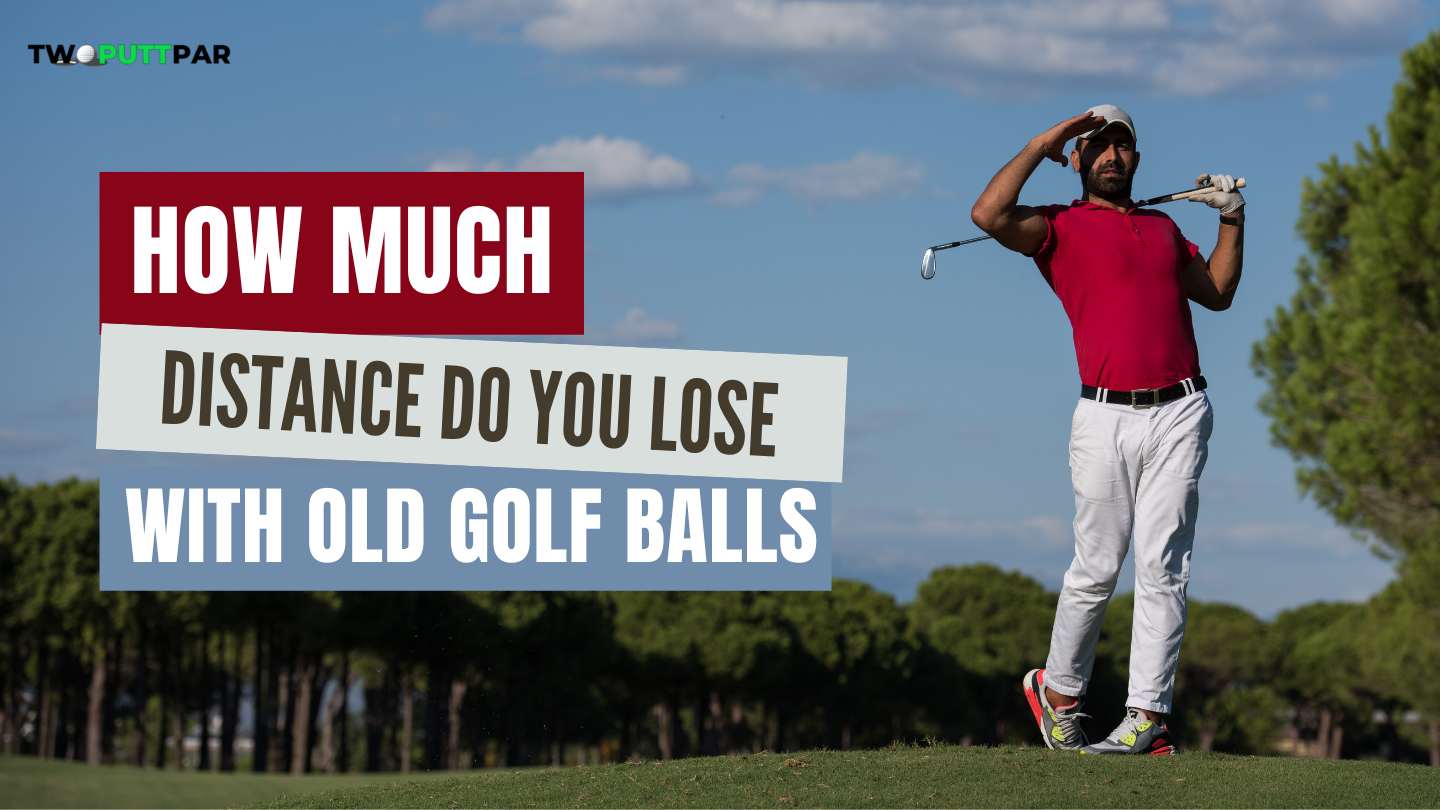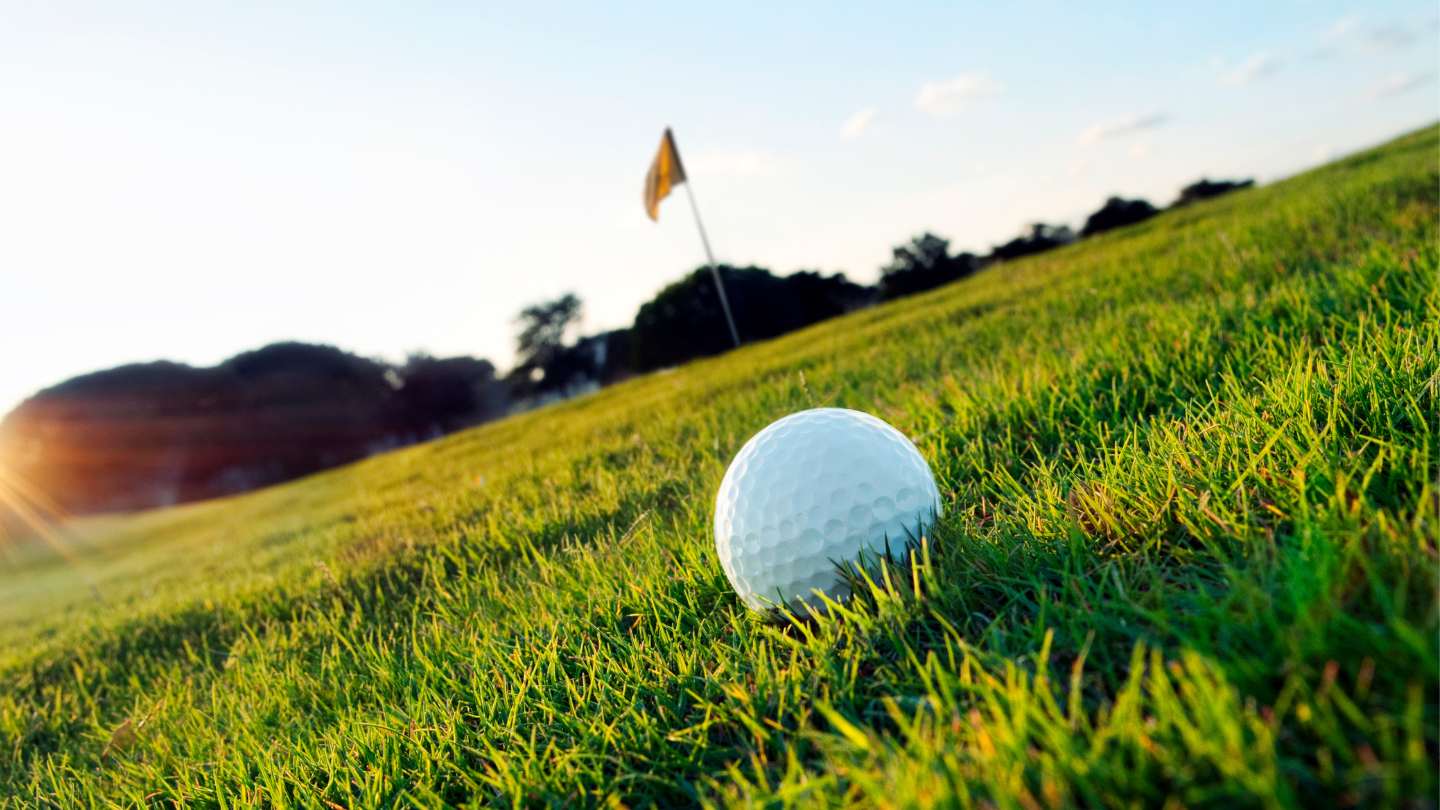
Mid-Handicap golfer who loves to share his rounds and experiences playing courses all around the UK in a hope that it will help others find those hidden gem golf courses.
I seek out golf courses that don’t get the credit they deserve and are often overlooked for the bigger more well known ones.
Through extensive testing, it has been discovered that golf balls do not necessarily lose distance with age unless there is visible damage to the cover.
In fact, most golf balls can last up to ten years when stored properly.
However, several factors can still impact the distance, ranging from a few yards to over 20 yards, depending on the age and quality of the ball.
For instance, when a golf ball is exposed to extreme temperatures or has been hit numerous times, its performance may be affected.
Golfers should be aware of these factors, and consider them when determining if their old golf balls have lost distance.
Ultimately, understanding these variables can help players make informed decisions on when it’s time to replace their trusty golf balls for optimal performance on the course.
Aging Golf Balls and Golfing Performance
Aging golf balls can indeed impact a golfer’s performance on the course. As golf balls age, their cover and core materials may deteriorate, which can lead to changes in shots and spin rates.
It’s essential for golfers to understand how old golf balls can affect their game and make the right choices when selecting and storing their golf balls.
Over time, golf balls can lose distance due to several factors, such as age and exposure to water, humidity, and temperature.
The quality of the golf ball also plays a significant role in how much distance is lost as it ages. In some cases, golfers may lose a few yards with old golf balls, while in other cases, the distance loss can be more than 20 yards.
Storage conditions greatly impact the lifespan of golf balls. Storing golf balls in a cool, dry place away from direct sunlight can help to maintain their performance and lessen the risk of losing distance.
Golfers who have a consistent swing speed should consider replacing their golf balls every two to four years, depending on the quality of the balls and the conditions they are exposed to.

Used golf balls may also lose distance if they have experienced extensive wear and tear.
Golfers should inspect their golf balls for damages, like scuffs, cuts, or discoloration, which may affect the ball’s performance.
Additionally, if golf balls have been submerged in water for extended periods, it may cause the layers of the ball to separate or soften, compromising their integrity and impact on shots.
In conclusion, golfers need to be aware of the potential loss of distance and performance that can occur with old or used golf balls.
Taking proper care of golf balls and knowing when to replace them can help maintain consistent performance on the course.
Do golf balls go bad?
Yes, golf balls can degrade over time, but the rate at which they go “bad” depends on various factors such as the quality of the ball, storage conditions, and how often they are used.
Golf balls are typically made of materials like rubber and synthetic polymers, and exposure to sunlight, heat, and water can contribute to their deterioration.
Over time, golf balls may lose their elasticity, which can affect their performance. They might not bounce as well or provide the same level of compression during impact with the golf club.
Exposure to extreme temperatures can also cause the materials to break down.
To maximize the lifespan and performance of golf balls, it’s recommended to store them in a cool, dry place, away from direct sunlight and extreme temperatures.
If you notice any visible damage, such as cracks or cuts on the surface, it’s a good idea to replace the ball as it may impact its aerodynamics and playability.
Additionally, if you’ve been using a ball for an extended period, it’s worth considering replacing it to ensure you get the best performance on the golf course.
Maintenance and Storage of Golf Balls
Proper maintenance and storage of golf balls are essential for ensuring their longevity and performance.
Golf balls can last for quite a while; most manufacturers agree that balls can last up to a decade when stored properly. However, various factors such as weather, wear and tear, and storage conditions can significantly affect their driving distance and overall performance.
To maintain optimal performance, it is best to store golf balls in a cool and dry place, away from excessive heat, cold, or moisture.
Storing golf balls in damp or humid conditions may cause the materials to deteriorate, which can lead to waterlogged balls.
Furthermore, prolonged exposure to water can also affect the shelf life of a golf ball, making them more susceptible to damage.
Golf balls’ dimples play an essential role in their aerodynamics, and imperfections such as scuffed or worn dimples can negatively impact their performance.
Therefore, it is crucial to carefully examine golf balls for any visible damage or wear before each use. When a golf ball shows noticeable signs of wear, it might be time to replace them to maintain optimal driving distance and accuracy.
Find out – How Many Dimples Are In a Golf Ball?
Weather conditions such as wind and moisture not only affect the golf balls during play but also during storage.
Golf balls stored in fluctuating temperatures may experience changes in compression, which can, in turn, affect their flight and consistency on the course. To save money and preserve the shelf life of golf balls, it is essential to store them in consistent conditions.
Proper maintenance and storage of golf balls play a significant role in preserving their performance and longevity.
By paying attention to factors such as storage conditions, wear and tear, and weather effects, golfers can ensure their golf balls provide optimal driving distance and accuracy for an extended period.
Frequently Asked Questions
What’s the impact of using old golf balls on distance?
The impact of using old golf balls on distance can vary depending on the condition of the ball. If the ball shows visible damage to the cover or has been used for several rounds, it may lose some distance. However, a well-preserved golf ball can maintain its performance for several 18-hole rounds without a significant loss in distance.
How does the age of a golf ball affect its performance?
Age alone does not necessarily affect the performance of a golf ball. If a golf ball has been sitting unused in a bag or on a shelf, its distance and performance should remain consistent. Factors that can impact a golf ball’s performance include exposure to extreme temperatures, direct sunlight, or moisture.
When should I consider replacing my golf balls?
It’s a good idea to replace golf balls when they begin to show signs of wear, such as scuffs, cuts, or other forms of damage on the cover. A golf ball without visible damage can last for at least seven full 18-hole rounds before losing any distance or performance.
Can the condition of a golf ball significantly influence its flight?
Yes, the condition of a golf ball can have an impact on its flight. Damage to the cover or dimples can result in altered aerodynamics, potentially affecting the ball’s flight trajectory and distance.
Do newer golf balls provide better distance than older ones?
New golf balls might offer better distance than older ones if the older balls have experienced wear or deterioration. However, if both balls are in good condition, there should not be a significant difference in distance between them.
What are the signs that a golf ball has lost its optimal performance?
A golf ball may have lost its optimal performance if it shows visible signs of wear, such as cuts, scuffs, or discoloration. Additionally, if a golfer notices that the ball is no longer flying as far or straight as it once did, it might be time to consider replacing it.
Conclusion
Like anything in life if you buy the best quality products and take care of them you will get the best performance from it.
With golf balls, the same can be said, but there will be a time to replace them.
Check for damage, losing spin rate, dropping out of the air quicker and the sound off the club face.
All are tell-tale signs it’s time to replace your golf ball.
Affiliate Disclaimer – As an affiliate, we may earn a commission from qualifying purchases. We get commissions for purchases made through links on this website from Amazon and other third parties.





Leave a Reply